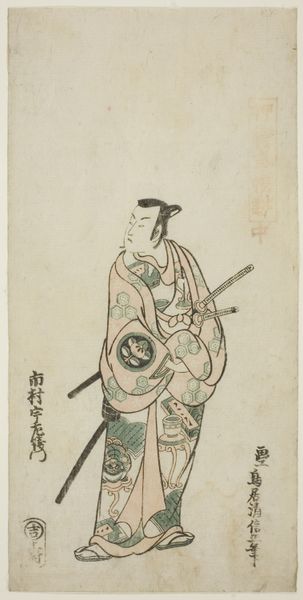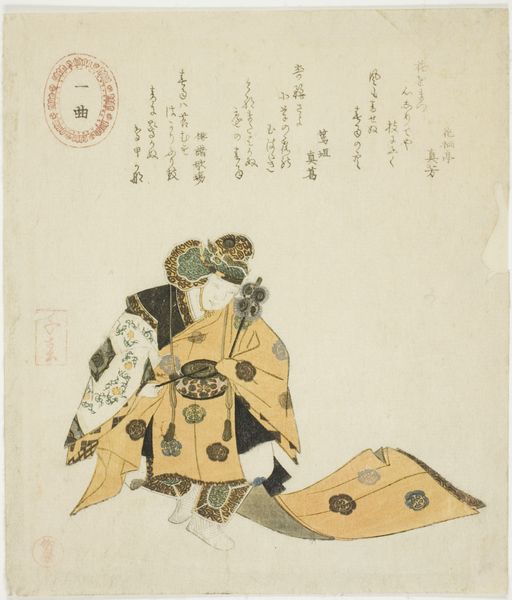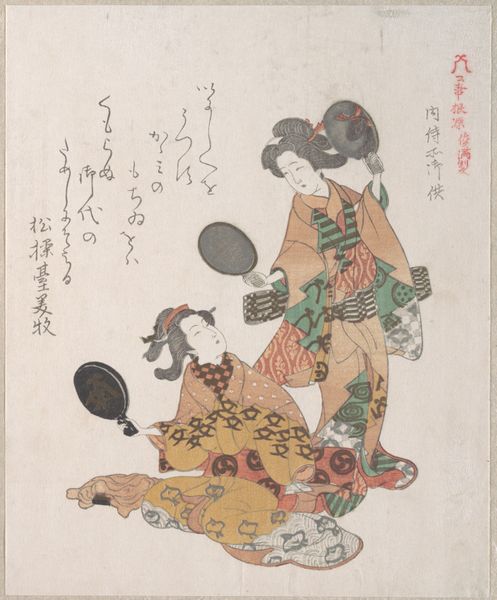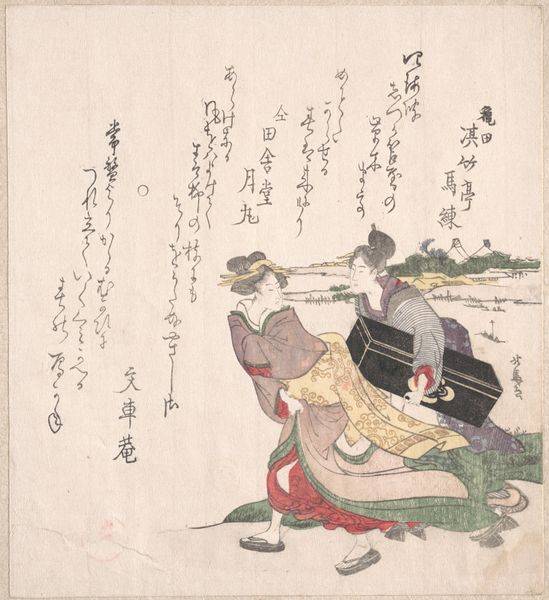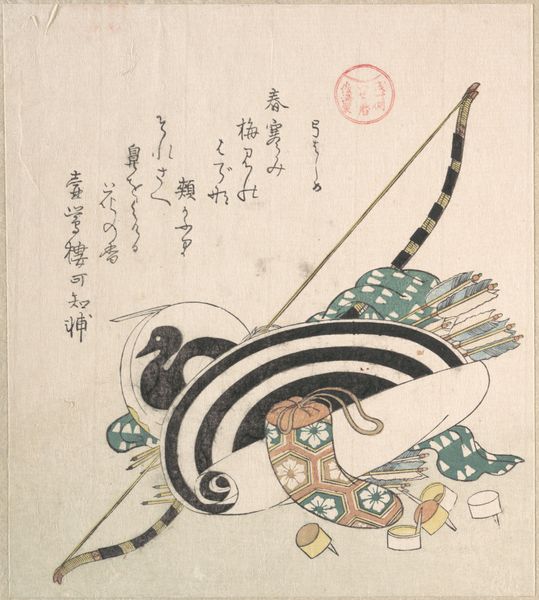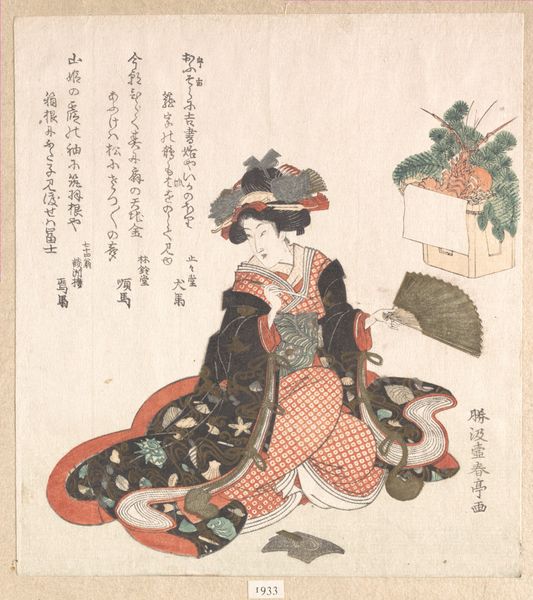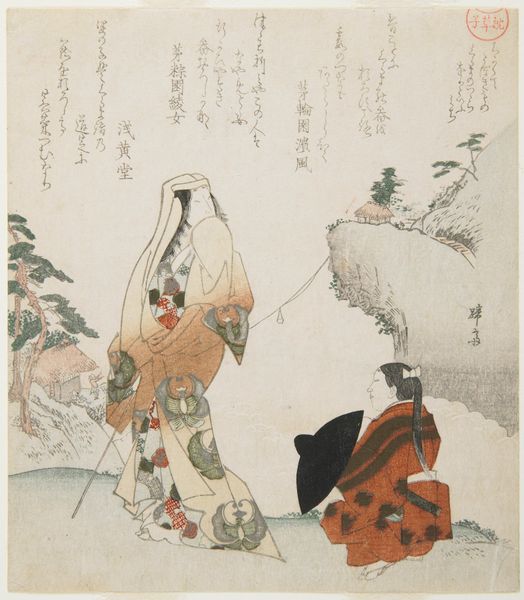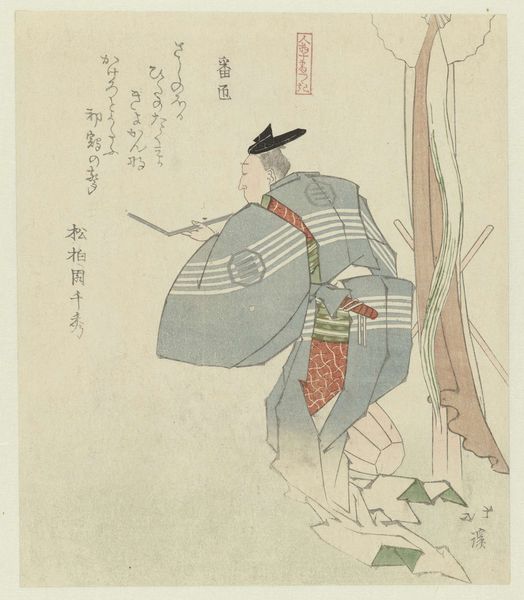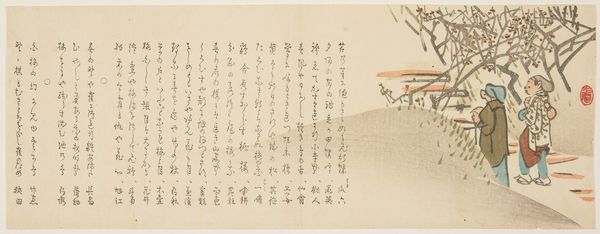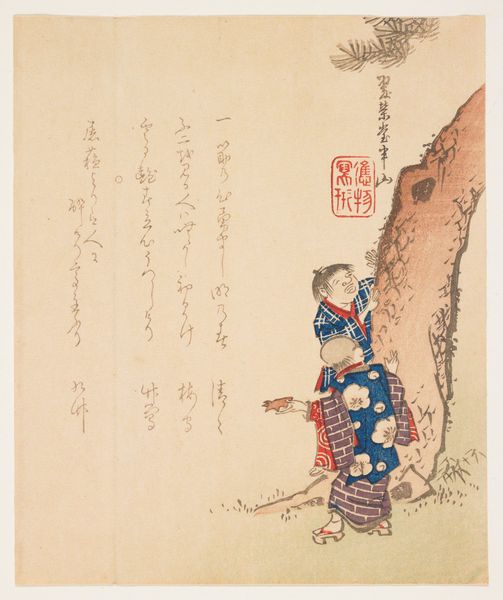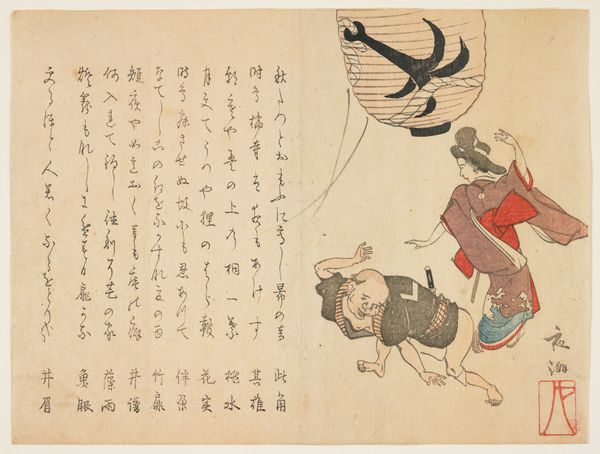
print, ink, woodblock-print
# print
#
asian-art
#
ukiyo-e
#
ink
#
woodblock-print
Dimensions: 8 1/8 x 7 1/8 in. (20.7 x 18.1 cm) (image, sheet)
Copyright: Public Domain
Curator: This intriguing print is titled "Tigers Run One Thousand Miles," created around 1818 by Ryūryūkyo Shinsai. It’s a woodblock print in ink, currently residing here at the Minneapolis Institute of Art. Editor: My immediate impression is one of gentle ambiguity. The muted tones, the fragments of imagery… it almost feels like a haiku, capturing a fleeting moment. Curator: I think the magic is in Shinsai’s mastery of the woodblock technique. Look at how he uses the grain of the wood and varying pressure to create different textures and subtle gradations of tone, especially in the tiger's fur. Editor: And the inclusion of text, almost integrated into the design, adds layers of meaning. Ukiyo-e prints were not simply aesthetic objects; they reflected a culture deeply rooted in literature, poetry, and social commentary. Is this piece meant to convey social satire or critique? Curator: It’s more likely celebrating literary allusion, ukiyo-e prints being relatively ephemeral objects. Note, too, that we don’t have a “full” tiger depicted, but instead parts of its hide associated with hunting paraphernalia. To me, the depiction focuses on the labor and process inherent to securing this luxurious animal. Editor: That highlights the complexities of representing nature and its exploitation in the context of 19th-century Japan. These images contributed to ideas around consumption, trade, and, indeed, societal power. Curator: Precisely. Shinsai's technical skill shines through the way the ink interacts with the paper and creates the overall effect. It bridges fine art and craft. Editor: Looking at the way the tiger imagery and text interact, it makes me consider our current perspectives on wildlife, endangered species, and what those economic realities might mean for marginalized groups. Curator: Shinsai's elegant approach forces me to ponder about artistry in object creation, and whether such pieces elevate commodity fetish. Editor: Seeing these layers is transformative. Shinsai invites you to question your place within the history of representation.
Comments
No comments
Be the first to comment and join the conversation on the ultimate creative platform.

